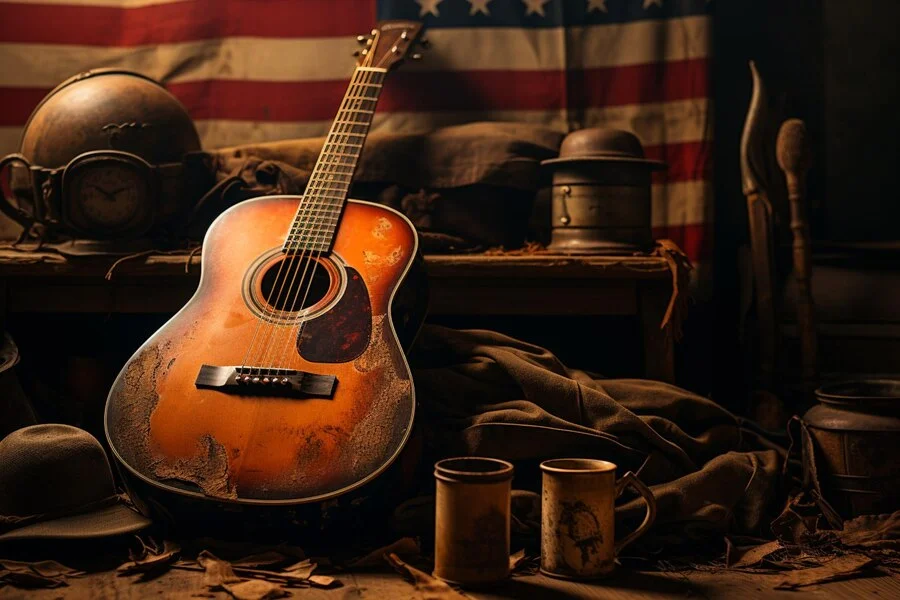Introduction
Bluegrass music, known for its dynamic rhythms and heartfelt melodies, relies heavily on its distinctive instruments. This article provides a comprehensive look into bluegrass instruments, focusing on their historical significance, evolution, and modern trends. Throughout, we’ll highlight how the “bluegrass instrument nyt” plays a crucial role in shaping this genre.
Historical Context
Origins of Bluegrass Music
Bluegrass music emerged in the 1940s, combining elements from traditional Appalachian folk music and jazz. Pioneers like Bill Monroe were instrumental in defining the genre, and the evolution of bluegrass instruments such as the banjo and mandolin played a significant role. The term “bluegrass instrument nyt” often evokes this transformative period, marking the era when these instruments began to crystallize into their modern forms.
Evolution of Bluegrass Instruments
Over the years, bluegrass instruments have undergone significant changes. From the traditional acoustic guitar and banjo to newer innovations like the Dobro, each instrument has evolved to enhance the bluegrass sound. The ongoing development of bluegrass instruments reflects the genre’s adaptability and growth, continuously shaping how the “bluegrass instrument nyt” influences modern music.
Key Figures and Milestones
- Bill Monroe: Known as the “Father of Bluegrass,” Monroe’s mandolin techniques revolutionized the genre.
- Earl Scruggs: His innovative three-finger banjo style became a cornerstone of bluegrass instrumentation.
- Flatt & Scruggs: Their contributions in the 1950s significantly expanded bluegrass’s popularity.
Core Bluegrass Instruments
Banjo
- History and Evolution: The banjo, with its roots in African musical traditions, became integral to bluegrass through its distinctive sound. The evolution of the “bluegrass instrument nyt” banjo highlights its transformation from folk to a defining element of the genre.
- Playing Techniques: Key techniques include Clawhammer and Three-Finger Picking, each contributing to the banjo’s unique role in bluegrass.
- Influential Banjoists:
- Earl Scruggs
- Don Reno
- J.D. Crowe
Acoustic Guitar
- Role in Bluegrass Music: The acoustic guitar provides the rhythmic and harmonic foundation in bluegrass bands. The development of the “bluegrass instrument nyt” guitar has been crucial in shaping its current sound.
- Playing Techniques: Techniques like flatpicking and fingerpicking are essential for creating the guitar’s rhythmic and melodic contributions.
- Prominent Guitarists:
- Doc Watson
- Tony Rice
- Clarence White
Mandolin
- Technical Details and Sound Characteristics: The mandolin is known for its bright, sharp tones and rapid playing style, pivotal in bluegrass. The “bluegrass instrument nyt” mandolin showcases these characteristics with precision.
- Playing Styles and Techniques: Includes chopping and melodic runs, integral to bluegrass music.
- Notable Mandolinists:
- Bill Monroe
- Sam Bush
- Chris Thile
Fiddle
- Differences from Classical Violin: The bluegrass fiddle, played with a more relaxed technique, focuses on rhythm and improvisation, distinguishing it from classical violin.
- Key Techniques: Techniques like double stops and slides are central to the bluegrass fiddle’s role.
- Renowned Fiddlers:
- Vassar Clements
- Stuart Duncan
- Ricky Skaggs
Double Bass
- Function and Role in Bluegrass: The double bass provides the foundational rhythm and deep tones essential to bluegrass ensembles. The “bluegrass instrument nyt” double bass is key to driving the genre’s rhythm.
- Playing Techniques: Includes pizzicato and arco, with pizzicato being more common in bluegrass.
- Influential Bassists:
- Ralph Stanley
- Victor Wooten
- Byron House
Additional Bluegrass Instruments
Dobro
- Unique Features and Role: The Dobro, a resonator guitar, is known for its metallic sound and slide techniques, adding a distinctive layer to bluegrass music.
Harmonica
- Contributions and Techniques: The harmonica adds a bluesy layer to bluegrass, often used for solos and adding texture. The role of the “bluegrass instrument nyt” harmonica reflects its adaptability within the genre.
Modern Trends and Innovations
Contemporary Bluegrass and Genre Fusion
Modern bluegrass often incorporates elements from rock, jazz, and other genres, creating a fusion that broadens its appeal. The evolving “bluegrass instrument nyt” reflects these innovations, showcasing how traditional instruments can blend with contemporary styles.
Technological Advancements in Bluegrass Music
Advancements in recording and amplification technology have allowed for new experimentation and precision in bluegrass. The modern “bluegrass instrument nyt” benefits from these technological improvements, enhancing both live performances and recordings.
Global Influence and International Bluegrass Scenes
Bluegrass music’s influence has reached beyond American borders, inspiring vibrant communities in countries like Japan, the UK, and Australia. The international “bluegrass instrument nyt” scene continues to grow, reflecting the genre’s global impact.
Resources for Aspiring Musicians
Learning Bluegrass Instruments: Online Resources and Tutorials
- YouTube Channels: Channels like “Banjo Ben Clark” and “Mandolin Cafe” offer tutorials and tips.
- Online Courses: Websites such as Udemy and Coursera provide courses on bluegrass instrumentation.
Practice Tips and Techniques
- Consistent Practice: Regular practice is essential for mastering bluegrass instruments.
- Jam Sessions: Engaging in jam sessions helps improve improvisational skills and connect with the bluegrass community.
Community Engagement: Festivals, Workshops, and Jam Sessions
- Festivals: Events like MerleFest and IBMA World of Bluegrass offer opportunities to experience bluegrass music firsthand.
- Workshops: Participate in local and online workshops to enhance your skills and network with other musicians.
Also Read: Everything You Need to Know About the Journeyman Camera
Conclusion
Bluegrass instruments are integral to the genre’s sound and evolution. From the traditional banjo and fiddle to the modern Dobro, these instruments each contribute uniquely to bluegrass music. Understanding the “bluegrass instrument nyt” helps appreciate their role in both historical and contemporary contexts.
FAQs
- Essential Bluegrass Instruments: Banjo, acoustic guitar, mandolin, fiddle, and double bass.
- Choosing the Right Bluegrass Instrument: Consider the instrument’s role and your personal musical interests.
- Finding Bluegrass Music and Performances: Look for local venues, festivals, and online platforms for bluegrass content.
- Notable Bluegrass Festivals and Events: MerleFest, IBMA World of Bluegrass, and RockyGrass Festival.
- Getting Involved in the Bluegrass Community: Join clubs, attend jam sessions, and participate in workshops.





















+ There are no comments
Add yours